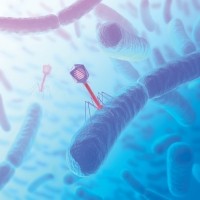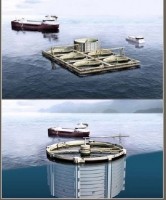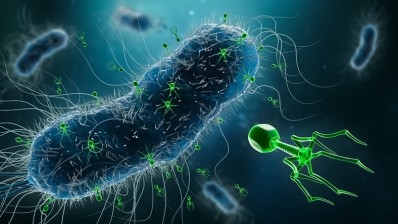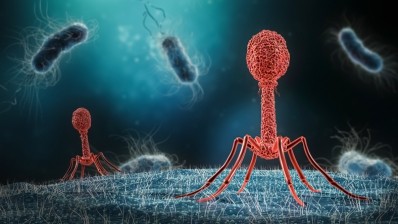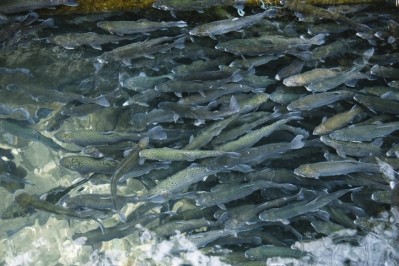Nutreco reaching for the moon in radical innovation chase
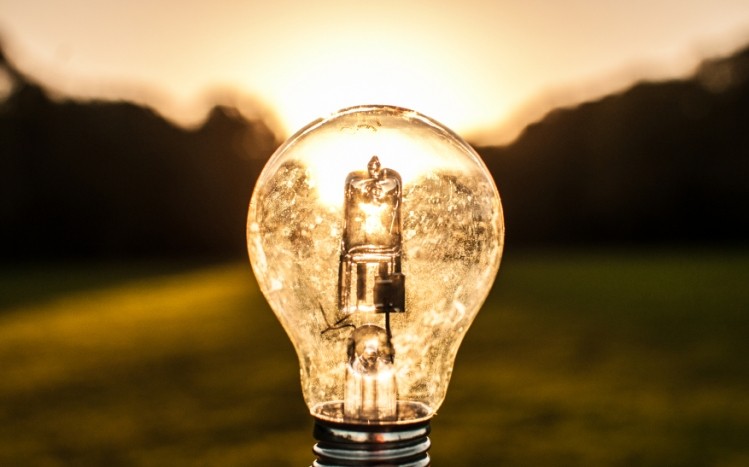
Yesterday [May 29] saw Cytophage Technologies selected as the winning entry of Nutreco’s competition, which is designed to kick-start breakthrough innovation in animal nutrition.
Cytophage is looking to develop a synthetic cocktail of bacteriophage to prevent and treat infections like campylobacter, salmonella and E. coli bacterial infections in chickens. It will now receive a validation trial in one of Nutreco’s research farms.
While bacteriophage can be isolated from the environment in which a particular bacterium grows, it is often like finding a needle in a haystack – it is difficult to do. An alternative to this system is to design, not find bacteriophage, claimed the Canadian company. There is the potential to design Cytophage bacteriophage for any bacterial problem, it said.
“Cytophage starts with a natural phage and then they put in what they called a template. Natural phages are extremely specific, focused on one strain only, and have variable killing efficiency. However, Cytophage’s synthetic bacteriophage take into account the potential for mutation/adaptation of target bacteria, and result in 100% kill rates,” said Halseth.
Results from an in-vivo broiler trial on Cytophage’s bacteriophage, in a challenged environment, showed from 6 log to zero reduction in 12 days, he said.
“We saw that this technology works and it works better than natural phages.”
Cytophage is only at the proof of concept phase. “It is not ready to go commercial yet.”
He said the North American feed and food regulators are open to these kind of phages, but the regulatory side is more uncertain when it comes to Europe. “Canada and the US are two large markets for it to get started in. Cytophage Technologies has not spent the time investigating the European market. It doesn’t mean the product can’t come to Europe at some stage. But it depends on the regulation.”
There were eight different nations among the top 10 tech challenge finalists, he said. “Not every product will be a global one but can be very relevant for some markets.”
'Tough job for the jury'
Halseth was one of six jury members assessing the 10 finalists. Cytophage Technologies' product was selected after votes from an international jury and the audience at F&A Next at Wageningen University were combined.
The other companies in the top three were Rex Animal Health and Folium Science, who along with Cytophage, had to pitch to the F&A Next delegates.
“It was a tough job for the jury, there was a widespread range of technologies [to evaluate]. When looking at technology for sea lice management versus protein production versus phage versus big data, it is very difficult to compare them.”
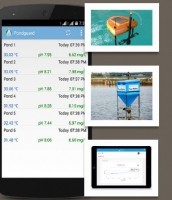
The jury had to apply strict criteria to weed out the winning company.
“We had to look at the capital outlay required to go to market - Arbiom has high capital needs, for example. Then we had to look at whether the company had a strong view on the regulatory pathway, then [we assessed] the investment needed in general, not only the factory, but whether there was a laboratory requirement, etc. We also looked at the of kind of social and environmental impact [of the technologies]. We looked at the type of team involved as well and whether we felt the team was one that was going to make it happen or not. And there were several teams that we thought could."
It doesn't end there for the finalists though.
“Last year, we had one winner but we had six companies that, to a larger extent and to a smaller extent, we [Nutreco] collaborated with [afterwards].”
Next generation technology
Indeed, he said the Dutch group has been busy identifying, developing and investing in next generation, sustainable products, models and services throughout the feed and food protein value chain, and has set up a platform – Nutreco NuFrontiers – to drive that.
“We want to invest in start-ups that have relevant ingredients for Trouw Nutrition or Skretting or digital solutions that could strengthen our technical services. We are looking at several. We will probably close one next week, an ingredient company deal.”
The company is hoping to invest in three to five products or technologies per year.
In April, Nutreco took a 25% share in Eruvaka, an India-based Internet of Things (IoT) company that develops connected devices and mobile-based decision tools aimed at helping shrimp farmers increase productivity.
“Start-ups are one area, but we also want to build positions through joint ventures in the value chain we are in, but outside the scope of Trouw Nutrition and Skretting.
Protein innovation
“We are looking at really new and innovative processes; we are looking at going into farming, actually into aquaculture [production], as it is a much less developed sector than [terrestrial farming]; it brings lots of challenges but possibilities as well. Or we can go into raw material production if we find something really sustainable.”
He said the company is weighing up similar technologies to Arbiom, but ones that are, perhaps, less capital intensive. “The projects we are looking at are only at the very early stage. We still have to see if we go to market with those. They will take at least three or four years to get the necessary volumes.”
Industry can expect new protein sources, and soon, he said.
"We would like to be specialists in one of them and produce hundreds of thousands of tons of product. Our ambition, a bit longer term, is to not only to produce this for Skretting, but to eventually to produce this [novel protein] for sale [through another division]. I rather believe in spending some time on finding what we think is the best technology, and then build competence, and be strong in this area.”
Rethinking salmon farming
Nutreco, he continued, has already communicated about two aquaculture related projects, also early stage, it is involved with.
Last year, it took a 40% stake in the project ‘Aquantum Leap’ a closed containment farming model being run by Norwegian company, Seafarming Systems. It is aimed at promoting cost effective salmon production that also overcomes biological and environmental challenges.
Initially targeted at salmon farming, the technology can be used in the production of any kind of farmed marine species, said Halseth.
“The other project is about creating more space for farming, based on a re-purposed ‘jack up’ drilling oil rig, surrounded by submersible fish cages.”
Norway’s Roxel Aqua is developing this concept for offshore salmon farming, and has applied for 14 development licenses for building and testing it.
“The government is issuing development licenses and we are in that application processes. If we have the license we can then invest in the system, but we are are only targeting roughly 40% [of the required investment]. We do not intend to get involved in the processing. We want to partner with a farmer that will supply the input on the fish side, as well as the output on harvest and the sales side on the salmon.”
The technology could be sold to others, he added.
“For six years, there has been no global growth in salmon. Perhaps there could be 1-2% growth this year versus 2012, but effectively, we can say it is flat. The reason why is that there is no longer the same social acceptance for salmon farming due to sea lice, due to escapees and also due to manure.
“We want to be part of bringing new technology to the market that meet those three big sustainability challenges in salmon farming today.”
The offshore concept means production is far away from any other farming. “You get a much higher current. You get a much more stable summer winter temperature. The number of sea lice in the water when you go 10km out from shore is totally different. I am 100% sure it will be far less of an issue.”
“We are only looking at innovative, sustainable projects - what we call moonshot projects – those that are radical in comparison to what we have done before.”
